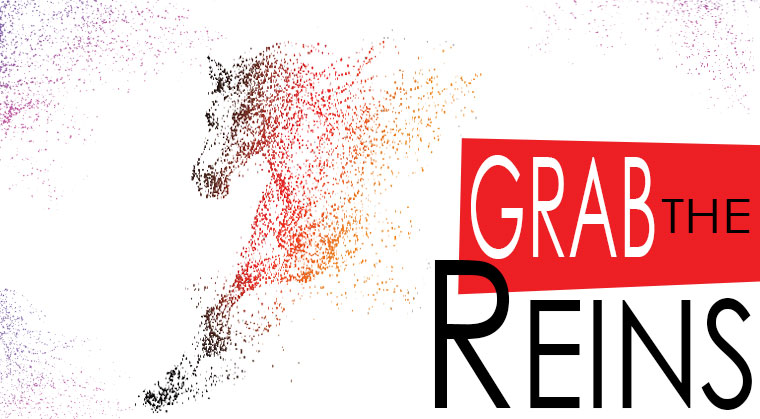Grab the Reins: Chapter 22


"H elp! I think I’m turning into Tamar!” I was speaking with Suri whom I’d been counseling for about a year. She found me through Mishpacha after having read my serial Three Steps and identifying with Tamar a shopping addict and codependent. Since Suri lives in New York our sessions were done by phone.
Suri was not addicted to shopping but to the Internet — e-mail recipes and especially news sites. She’d become a slave to her smartphone which she grew to love and hate in equal parts. Her recovery began with switching from a smartphone to a kosher phone. When she started using the family laptop Suri asked her husband to password protect it.
Acquiring both self-awareness and the tools to deal with cravings Suri had begun to live life again. She was rediscovering herself as a wife mother and artist no longer choked by her addiction nor trapped by her need to control everyone and everything. Of course there was the occasional longing for “just a quick peek” at the Internet but that too was something she’d learned to expect accept and navigate.
But recently Suri’s recovery developed a glitch: shopping as a painkiller. She understood that using any behavior that way could lead her back into addictive thinking patterns and behaviors. We had to figure out if Suri’s shopping was heading toward addiction. After her panicked call I gave her homework — to write down her thoughts and feelings before during and after shopping.
When we spoke next Suri said “I never liked shopping but suddenly I’m finding reasons to go. To the grocery store the pharmacy Walmart…”
I asked for an example.
“I’ll give you ten examples ” she said. “My walking shoes wore out. I bought a new pair. Then I bought another pair because they were on sale and what’ll happen when the new ones wear out? I realize that shopping calms me down. Like my phone used to. It’s like all my old obsessive thinking is taking over again!”
I got the picture. I told her that her coming to this realization on her own showed how her healthy thinking had become so intrinsic that it spotlighted a problem before it spiraled out of control.
I gave her more homework: to honestly consider if each purchase was a need or want.
The next time we spoke Suri said “Getting clean from my phone was easy.”
I burst out laughing.
After a short pause she laughed as well. “Okay okay so it wasn’t easy. It was the hardest thing I ever did. I...”
I waited while she groped for words.
“I can’t quit shopping the way I quit my phone!” she cried. “It would mean totally changing the way my house operates. It’s… it’s crazy! Impossible!”
“First of all if you needed to stop shopping to stay clean we’d find a way.”
“But—”
I didn’t let her continue. “But no one’s saying you’ll need to. We’ll create guidelines so you can shop safely. Sanely.”
Her voice shook. “I don’t have to give up shopping?”
“First we’ll try guidelines see how it goes. Black and white is simpler. Easier. Safer more reliable. But when it’s not practical we can try to see if grays can work too.”
I waited for her sigh of relief. Instead she let out a whimper of despair. (Excerpted from Family First Issue 558)
Oops! We could not locate your form.


